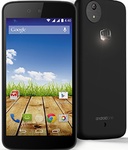The tech behind the “astronauts” - Android
Photos of two Filipino citizens went viral today due to their astronaut-like getup, as some people on social media are describing, while they’re shopping...
The post The tech behind the “astronauts” appeared first on YugaTech | Philippines Tech News & Reviews.
Photos of two Filipino citizens went viral today due to their astronaut-like getup, as some people on social media are describing, while they’re shopping in a market. Their appearance caught the attention of netizens and immediately received tons of comments and criticisms on social media. But what are they actually wearing?

Photos from Tramer Bernaldez Nastor
What it is is what you call a Powered Air Purifying Respirator (PAPR) by Surgitech. While some people are making fun of its looks, it is actually a piece of protective equipment. With the further spread of the COVID-19 virus, all of us are equipping ourselves with the utmost possible protection we know. So, now let’s dig into this PAPR and learn more about it.

What is a PAPR?
PAPR is identified as a piece of protective equipment for Healthcare Practitioners (HCP). Healthcare Practitioners are at particular risk during pandemics and epidemics of highly virulent diseases.
According to the Centers for Disease Control and Prevention (CDC), a PAPR is an air-purifying respirator that uses a blower to force air through filter cartridges or canisters and into the breathing zone of the wearer. This process creates an airflow inside either a tight-fitting facepiece or loose-fitting hood or helmet, giving a higher assigned protection factor (APF) than the reusable elastomeric non-powered air-purifying half facepiece (half mask) or N95 FFRs. A PAPR is used as protection during healthcare procedures in which HCP are exposed to greater risks of aerosolized pathogens causing acute respiratory infections.
Furthermore, a PAPR may have a tight-fitting half or full facepiece or a loose-fitting facepiece, hood, or helmet. However, the Loose-fitting NIOSH-approved PAPRs have various advantages over tight-fitting non-powered approved air-purifying respirators, including the following:
• A fit test is not required for PAPRs with loose-fitting headgear such as hoods and helmets.
• PAPRs with loose-fitting headgear can be worn with a limited amount of facial hair.
• Some models have cartridges for particulate and/or gas/vapor protection.
• Hooded PAPRs and PAPRs with helmets may offer limited to significant splash protection for the face and eyes.
• PAPR systems have assigned protection factors (APF) of at least 25 (and up to 1,000 in some cases)
• Some PAPRs have disposable, loose-fitting headgear, and patients can see the HCP’s face for better communication.
• Most PAPR components can be cleaned, disinfected, re-used, and shared.
• PAPRs use only HE filters, which have a greater filtration efficiency against the smallest pathogen particles than N95 FFRs.
• A PAPR may be less taxing from a physiological/breathing resistance perspective than other respirators.
However, CDC also mentioned that the facility should assess the limitations and factors associated with using PAPRs when considering their use in healthcare settings, including the following:
• A PAPR may interfere with the HCP’s visual field because of the limited downward vertical field of view.
• The HCP’s ability to hear may be reduced because of the blower noise and noise-induced by the movement of a loosehead covering.
• The HCP’s ability to use a stethoscope may be limited.
• PAPR batteries must be recharged or replaced.
• PAPRs require a significant amount of storage space in between shifts.
• The facility must train HCP’s or other staff to maintain and properly disinfect and clean the PAPR.

Photo credits: Medasia Medical Products Corporation
Surgitech products, including the Surgitech Powered Air Purifying Respiration P-SH100, are imported and distributed by Medasia Medical Products Corporation in the country. The P-SH100 costs PHP 26,000. It features 99.996% filter efficiency and adjustable 3 level airflow control, enabling continuous filtered air. It is equipped with TH3 PR SL protection, various warning settings, and a rechargeable battery. There are other PAPR in the market if you look further.

Photo credits: Medasia Medical Products Corporation
The P-SH100 also comes with NIOSH certification. Meaning it meets the National Institute for Occupational Safety and Health (NIOSH) standards under the authorization of the Occupational Safety and Health Act of 1970. According to CDC, NIOSH provides a testing, approval, and certification program assuring respirators used in the workplace meet the standards of 42 CFR Part 84.
Should you get one?
PAPRs are intended to be used in healthcare for various applications. As it is designed particularly for medical purposes with specific functions, it is costly and requires strict and robust maintenance for repairing or replacing components, as well as cleaning, disinfection, and battery management procedures.
While it is clear that PAPRs are meant for health professionals, we can do our part of protecting ourselves by using masks recommended by medical experts, following health protocols, keeping ourselves healthy, as well as staying safe at home, especially if it is not necessary to go out. Meanwhile, I don’t think we should make fun of those who take steps to protect themselves from the virus as long as it is effective and doesn’t do harm. What we could do instead is to educate ourselves more about these kinds of tech.
After all, we surely have one ideal goal: the COVID-19 pandemic to end finally so that we will no longer need to wear any face masks and face shields. Stay safe y’all!
Sources: CDC, Medasia Medical Products Corporation
The post The tech behind the “astronauts” appeared first on YugaTech | Philippines Tech News & Reviews.
05/04/2021 09:40 AM
Huawei Band 6 with a large AMOLED screen, 2-week battery announced
05/04/2021 05:52 AM
PRC fleet vehicles gear up with Honda for road safety
05/04/2021 07:47 AM
Acer ConceptD 3 Ezel Hands-On
05/04/2021 01:23 AM
DITO Telecommunity extends Welcome Offer promo
05/04/2021 09:37 AM
LG confirms closing of mobile phone business worldwide
05/04/2021 03:29 AM
WATCH - Acer ConceptD 3 Ezel Hands On
05/04/2021 01:24 AM
Genshin Impact coming to PS5
05/04/2021 06:31 AM
Xiaomi Redmi Note 10 Pro priced in the Philippines
05/04/2021 12:15 PM
- HEALTH
- Comics
- Libraries & Demo
- Sports Games
- Racing
- Photography
- Transportation
- Media & Video
- Sports
- Health & Fitness
- Weather
- Medical
- Cards & Casino
- Arcade & Action
- Personalization
- Social
- Communication
- Productivity
- Casual
- Shopping
- Tools
- Brain & Puzzle
- Business
- News & Magazines
- Finance
- Lifestyle
- Music & Audio
- Entertainment
- Travel & Local
- Books & Reference
- Education









